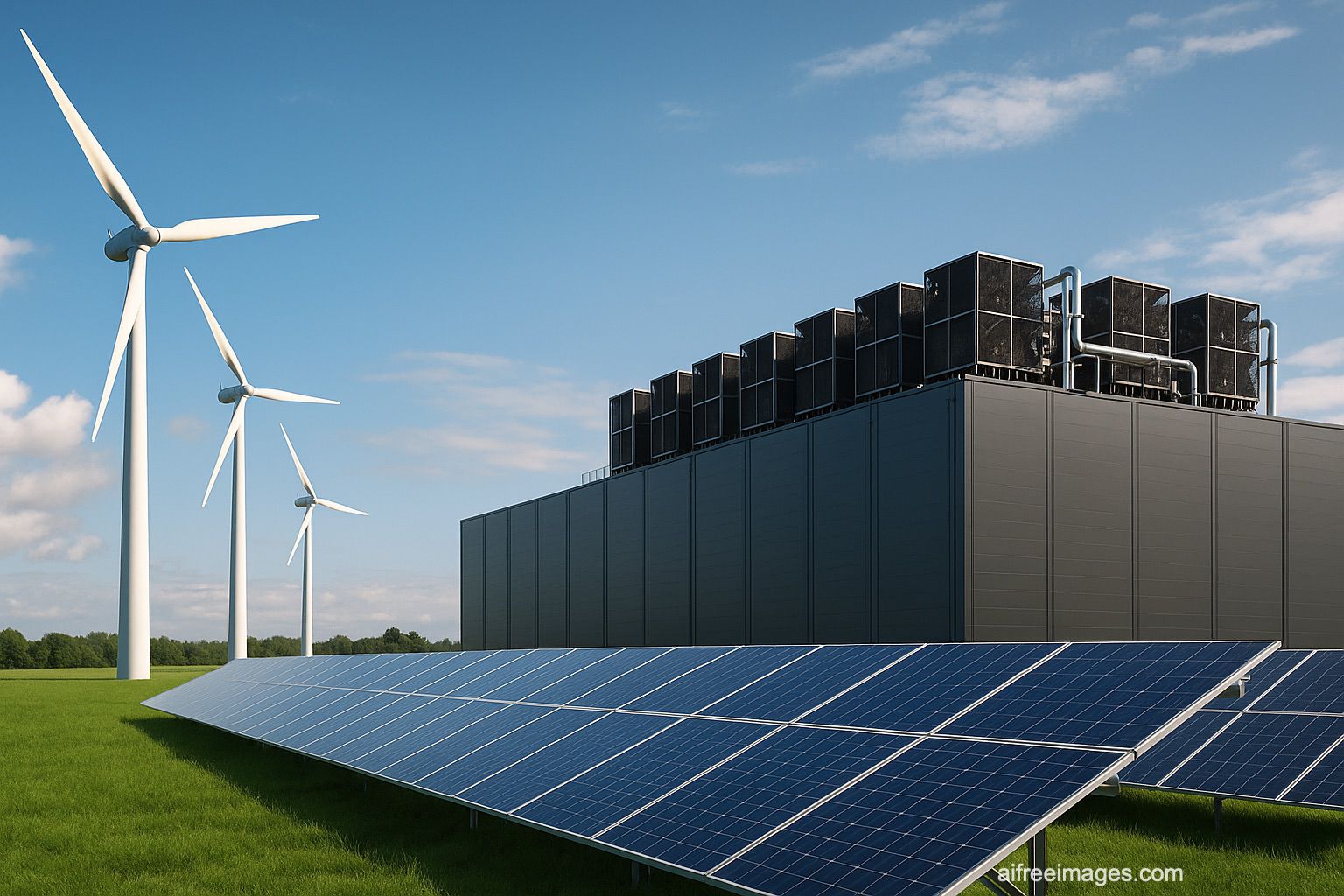The competition between the United States and China for technological and industrial leadership has a new chapter: the energy fueling the digital revolution. The Data Center Coalition, which includes giants like Microsoft, Amazon, and Google, has sent a letter to Treasury Secretary Scott Bessant demanding the continuation of subsidies for wind and solar energy. The rationale is clear: without cheap and abundant renewables, the exponential growth of the data center sector—and particularly artificial intelligence—could be abruptly halted.
A hungry industry for electricity
Global digitalization has turned data centers into genuine “electricity factories.” In 2024, only the major U.S. hyperscalers contracted over 48 GW of clean energy, representing a 66.4% increase from the previous year, according to industry data. Power Purchase Agreements (PPAs) signed by Meta, Google, or Amazon include solar facilities of hundreds of megawatts in Texas, Oklahoma, and Mississippi.
This energy appetite is driven by the AI era, which multiplies electricity demand multiple times. A single cluster of cutting-edge GPUs can consume as much as a medium-sized city. “Any regulatory slowdown in deploying new generation impacts our ability to meet tomorrow’s electricity demand,” warned the coalition in their letter.
A shift in the Trump administration
The issue for tech companies is that Donald Trump’s administration has decided to fundamentally review green incentives. Under the legislative package known as the Big Beautiful Bill, provisions include:
– A 50% tax on wind projects completed after December 2027 unless they demonstrate no Chinese components.
– A 30% tax on solar installations under similar conditions.
– The elimination of tax credits for projects over 1.5 MW that exceed the 5% “safe harbor” threshold.
If applied without exceptions, over $100 billion in planned investments and up to 6 GW of projects could be affected.
Trump defends his decision, arguing renewables are costly, intermittent, and reliant on foreign supply chains, threatening grid stability. However, independent studies contradict this view.
Renewables are cheaper than coal
The latest report from Energy Innovation, the Coal Cost Crossover 3.0, shows that 99% of U.S. coal plants are now more expensive to maintain than building new solar or wind capacity. In three-quarters of cases, the cost difference favors renewables by over 30%.
The Inflation Reduction Act (IRA) has reinforced this trend by expanding tax credits and financing mechanisms to replace fossil plants with clean projects. The report estimates that local replacement of coal plants with renewables could generate $589 billion in investments within energy communities and support up to 137 GW of four-hour backup batteries.
Risk of losing the lead to China
The debate extends beyond energy policy. The Data Center Coalition warns that if the U.S. cuts incentives, China could surpass Washington in the clean energy race applied to AI. China has been developing a domestic supply chain for solar panels, wind turbines, and batteries for years, with increasingly competitive prices.
For U.S. tech companies needing affordable and reliable electricity to run their global clouds, maintaining subsidies is a strategic factor. “The risk isn’t just economic—it’s geopolitical. Losing renewable production capacity to China would weaken us in the technological competition,” industry insiders note.
A transition with tensions
The paradox is that while the government criticizes subsidies, local communities could greatly benefit from the transition. Deploying renewables in coal-dependent areas would maintain tax revenues and create jobs, utilizing existing grid infrastructure.
However, regulatory uncertainty threatens to delay multibillion-dollar investments. Many developers are considering postponing projects until the outcome of negotiations between the Trump administration, the Treasury, and major tech companies is clear.
Perspectives for 2025 and beyond
All signs point to 2025 being a decisive year. If Congress maintains the cuts, the U.S. might see a slowdown in new renewable capacity at a critical time when AI and digital services depend on it most.
Clean energy advocates emphasize that this issue isn’t solely about competitiveness, but also public health, environmental sustainability, and grid resilience. As coal and gas lose economic attractiveness and climate pressures increase, the question remains whether the U.S. is willing to abandon the advantage that has so far led it to dominate the global tech sector.
FAQs
What is the Data Center Coalition?
It’s an organization representing leading U.S. data center operators like Microsoft, Amazon, and Google, advocating for their shared interests with government agencies.
Why do data centers depend so heavily on renewables?
Because their electricity consumption is massive and growing, driven by AI. Renewables offer competitive prices and long-term contracts that ensure stability.
What impact would subsidy elimination have?
It could halt over $100 billion in investments in wind and solar projects, slow down the energy transition, and increase reliance on gas and coal.
Are renewables really cheaper than fossil fuels?
Yes. According to Coal Cost Crossover 3.0, 99% of coal plants in the U.S. cost more to operate than replacing them with new solar or wind capacity.
via: datacenterdynamics

